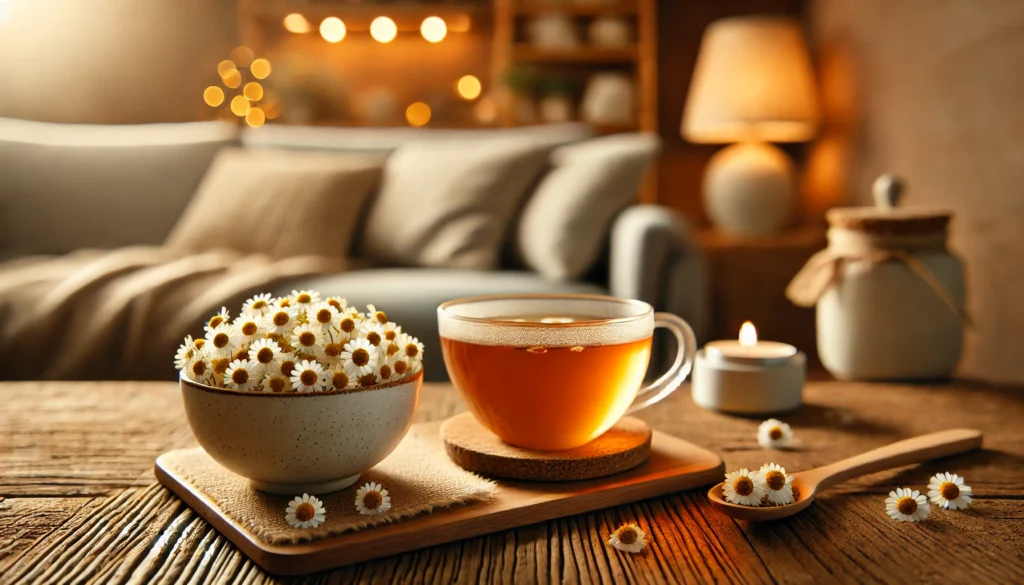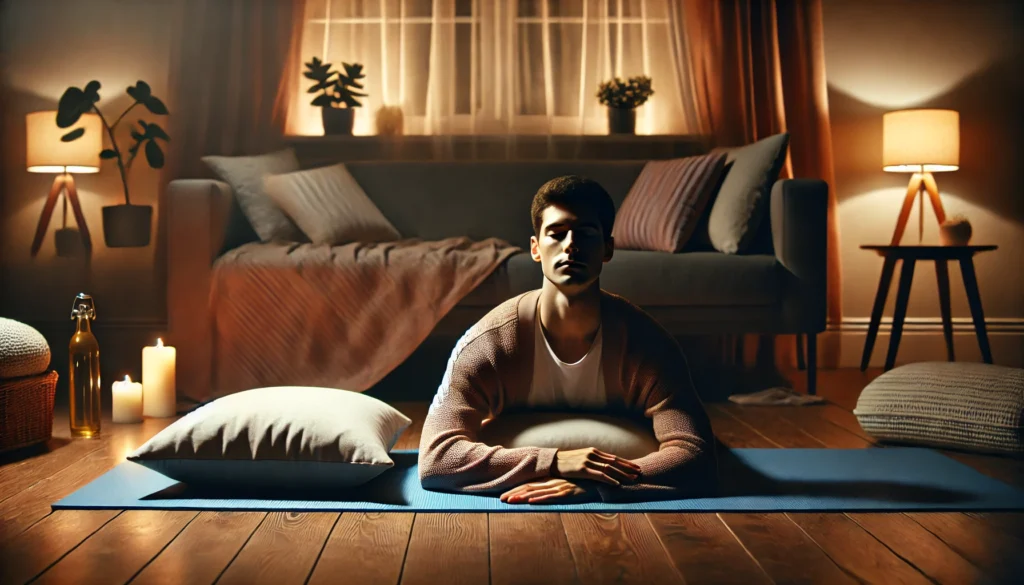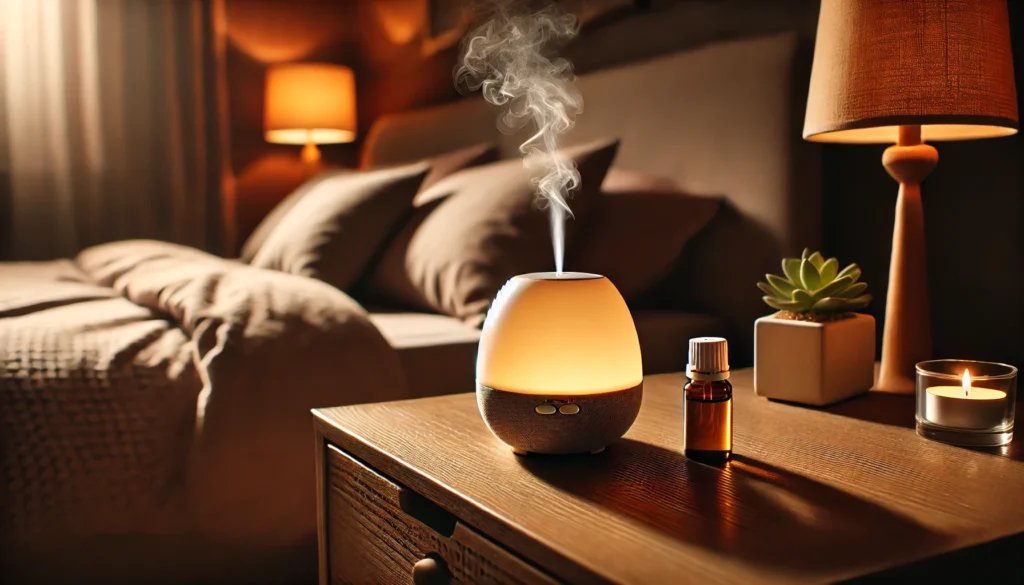In this article, we will explore effective home remedies for managing panic attacks and anxiety. Whether you’re a health and wellness coach looking to provide clients with practical advice, a science journalist seeking to translate complex information into accessible language, or a biohacker optimizing mental and physical health, these strategies are grounded in both historical practices and contemporary scientific research.
You may also like: Natural Supplements for Effective Anxiety Relief

Understanding Panic Attacks
Before diving into home remedies, it’s important to understand what a panic attack is. Panic attacks are sudden episodes of intense fear or discomfort that reach a peak within minutes. They are typically characterized by a combination of physical and psychological symptoms such as palpitations, sweating, trembling, sensations of shortness of breath, and an overwhelming sense of dread.
Causes and Triggers
Panic attacks can be triggered by a variety of factors, including stress, trauma, or even certain medical conditions. Stressful life events or changes, such as losing a job or the death of a loved one, can precipitate panic attacks. Additionally, ongoing stress or anxiety disorders can set the stage for these episodes. It’s crucial to identify the root cause of panic attacks, as this can guide the choice of home-based treatments and lifestyle changes.
Psychological Symptoms
The psychological symptoms of panic attacks often include an overwhelming sense of fear or impending doom. This can be accompanied by feelings of detachment from reality or oneself, known as depersonalization. Understanding these psychological symptoms is vital, as they can be just as distressing as the physical symptoms, sometimes leading to avoidance behaviors that can impact daily life.
Physical Symptoms
Physical symptoms of panic attacks include a racing heart, sweating, and trembling. These symptoms arise because the body’s fight-or-flight response is activated, pumping adrenaline into the system. Recognizing these physical symptoms can help in distinguishing a panic attack from other medical conditions, which is crucial for proper management.
Breathing Techniques: The Foundation of Calm
One of the most accessible and effective remedies for panic attacks is controlled breathing. When anxiety strikes, our breathing patterns change, often becoming rapid and shallow, which can exacerbate feelings of panic.
Diaphragmatic Breathing
Diaphragmatic breathing, also known as deep breathing, involves taking slow, deep breaths to engage the diaphragm rather than the chest. This technique can help activate the body’s parasympathetic nervous system, promoting a state of calm. To practice diaphragmatic breathing, follow these steps:
- Comfortable Position: Sit or lie down in a comfortable position. Ensure that your posture is relaxed but upright to facilitate deep breathing.
- Hand Placement: Place one hand on your chest and the other on your abdomen. This helps you to monitor your breathing patterns and ensure you’re using your diaphragm.
- Inhalation: Breathe in slowly through your nose, allowing your abdomen to rise while keeping your chest relatively still. Focus on the movement of your abdomen as it expands.
- Exhalation: Exhale slowly through your mouth. Try to make your exhalation longer than your inhalation to maximize relaxation.
- Repetition: Repeat for several minutes until you feel more relaxed. Consistency is key, so practice this technique daily to enhance its effectiveness during panic episodes.
Box Breathing
Another effective breathing technique is box breathing, which involves inhaling, holding the breath, exhaling, and holding again, each for a count of four. This method can help regulate the nervous system and reduce anxiety levels.
- Inhale: Breathe in slowly and deeply through your nose for a count of four. Visualize filling your lungs with air gradually.
- Hold: Hold your breath for a count of four. This pause allows your body to absorb the oxygen and prepare for the next step.
- Exhale: Exhale slowly through your mouth for a count of four. Focus on releasing all tension and stress with the breath.
- Hold: Hold your breath again for a count of four before starting the cycle anew. This pause can help ground you in the moment, enhancing mindfulness.
Resonance Breathing
Resonance breathing, also known as coherent breathing, involves breathing at a rate of about five breaths per minute. This technique is believed to optimize the heart rate variability, promoting relaxation and emotional stability.
- Slow Inhale: Inhale gently through your nose for a count of six seconds. Allow your breath to be smooth and continuous.
- Controlled Exhale: Exhale gently and completely through your nose for the same duration. Focus on the sensation of the air leaving your body.
- Consistency: Maintain this rhythm for several minutes. Regular practice can help train your body to remain calm and composed under stress.
Mindfulness and Meditation: Anchoring the Mind
Mindfulness and meditation practices have gained significant attention for their ability to reduce anxiety and stress. By focusing on the present moment and accepting it without judgment, mindfulness can help interrupt the cycle of anxious thoughts that contribute to panic attacks.
Guided Meditation
Guided meditation, which involves listening to a narrator lead you through a meditative process, can be particularly helpful for beginners. There are numerous apps and online resources available that offer guided sessions tailored to anxiety relief. These resources often incorporate soothing music and nature sounds to enhance relaxation.
- Find a Quiet Space: Choose a peaceful environment where you won’t be disturbed. This is important for maintaining focus during meditation.
- Select a Guide: Use apps like Calm or Headspace, which offer a variety of guided meditations specifically designed for anxiety relief.
- Regular Practice: Commit to a regular meditation schedule, even if it’s just for a few minutes each day. Consistency can enhance the benefits and help you develop a habit.
Progressive Muscle Relaxation
Progressive muscle relaxation is a technique that involves tensing and then slowly relaxing each muscle group in the body. This practice can help release physical tension associated with anxiety and promote a sense of relaxation.
- Comfortable Position: Sit or lie down comfortably in a quiet place.
- Tensing Muscles: Starting from your toes, tense each muscle group tightly but not to the point of strain.
- Releasing Tension: After a few seconds, release the tension and focus on the feeling of relaxation that follows.
- Progression: Move progressively through your body, from your feet to your head, tensing and relaxing each muscle group. This systematic approach can help reduce overall tension.
Mindful Walking
Mindful walking involves walking slowly and deliberately, focusing on each step and the sensations involved. This practice can be a moving meditation, helping to ground you and bring awareness to the present moment.
- Slow Pace: Walk at a slow pace, paying attention to each movement of your feet.
- Sensory Awareness: Engage your senses by noticing the feel of the ground, the air on your skin, and the sounds around you.
- Mindful Breathing: Synchronize your breathing with your steps to enhance relaxation and focus.

Herbal Remedies: Nature’s Soothing Touch
Herbal remedies have been used for centuries to alleviate symptoms of anxiety. While more research is needed to fully understand their efficacy, several herbs have shown promise in reducing anxiety and promoting relaxation.
Chamomile and Lavender
Chamomile and lavender are two herbs commonly used for their calming properties. Chamomile tea, in particular, is a popular choice for its mild sedative effects. Lavender, whether used in essential oil form or as a tea, has also been shown to reduce anxiety levels.
- Chamomile Tea: Brew a cup of chamomile tea and sip slowly, focusing on the warmth and taste. This can be a comforting bedtime ritual to promote relaxation.
- Lavender Oil: Use lavender essential oil in a diffuser or apply a few drops to your pillow. Its soothing aroma can help ease anxiety and improve sleep quality.
- Herbal Baths: Consider adding chamomile or lavender to a warm bath. The combination of warm water and calming scents can enhance relaxation.
Passionflower and Valerian Root
Passionflower and valerian root are herbal supplements that have been studied for their potential to reduce anxiety and improve sleep quality. It’s important to consult with a healthcare professional before starting any new supplement, especially if you are taking other medications.
- Passionflower Tea: Similar to chamomile, passionflower can be consumed as a tea. Its calming effects may help ease anxiety symptoms.
- Valerian Supplements: Valerian root can be taken in capsule form to promote relaxation and support sleep. Always follow dosage recommendations provided by a healthcare provider.
- Combination Blends: Some herbal teas and supplements combine these herbs for synergistic effects. Exploring different combinations can help you find what works best for you.
Lemon Balm and Ashwagandha
Lemon balm and ashwagandha are additional herbs that have been noted for their calming properties. Lemon balm is often used to reduce stress and improve mood, while ashwagandha is an adaptogen that can help the body manage stress more effectively.
- Lemon Balm Tea: Enjoy lemon balm as a tea to help uplift your mood and reduce anxiety.
- Ashwagandha Supplements: Ashwagandha can be found in capsules or powders. It’s known for its ability to balance stress hormones and promote mental clarity.
- Herbal Consultation: As with any supplement, consult with a healthcare provider before using lemon balm or ashwagandha, especially if you have existing health conditions.
Lifestyle Modifications: Building Resilience
In addition to specific remedies, lifestyle changes can play a crucial role in managing anxiety and preventing panic attacks.
Regular Exercise
Regular physical activity is one of the most effective ways to reduce anxiety. Exercise releases endorphins, which are natural mood lifters, and can help distract from anxious thoughts.
- Routine Workouts: Establish a regular exercise routine that includes activities you enjoy, such as walking, running, or yoga.
- Community Classes: Joining group fitness classes can provide social support and motivation, further enhancing the benefits of exercise.
- Mind-Body Exercises: Practices like yoga and tai chi combine physical movement with mindfulness, offering dual benefits for mental health.
Balanced Diet and Hydration
A balanced diet rich in whole foods, along with proper hydration, can significantly impact mental health. Nutrient-dense foods support brain function and overall well-being, while dehydration can exacerbate feelings of anxiety.
- Whole Foods: Focus on whole grains, lean proteins, and a variety of fruits and vegetables to provide essential nutrients.
- Hydration Habits: Aim to drink plenty of water throughout the day. Herbal teas and flavored water can be enjoyable alternatives to plain water.
- Mindful Eating: Practice mindful eating by savoring each bite and paying attention to hunger and fullness cues. This can help reduce stress-related eating patterns.
Sleep Hygiene
Quality sleep is essential for managing stress and anxiety. Establishing a regular sleep schedule and creating a calming bedtime routine can improve sleep quality and reduce the likelihood of panic attacks.
- Consistent Sleep Schedule: Go to bed and wake up at the same time each day, even on weekends, to regulate your body’s internal clock.
- Relaxing Routine: Develop a pre-sleep routine that includes calming activities like reading or taking a warm bath.
- Sleep Environment: Create a restful sleep environment by keeping your bedroom cool, dark, and quiet. Consider using a white noise machine or blackout curtains if needed.
Seeking Professional Help
While home remedies can provide significant relief, it’s important to seek professional help if panic attacks persist or worsen. A mental health professional can provide tailored treatment options and support.
Therapy and Counseling
Therapists can help identify underlying causes of anxiety and develop coping strategies. Cognitive-behavioral therapy (CBT) is particularly effective for treating panic disorders by changing negative thought patterns.
- Finding a Therapist: Look for licensed professionals who specialize in anxiety disorders. Recommendations from friends or healthcare providers can be valuable.
- Therapy Sessions: Regular sessions can help build coping skills and resilience over time. Be open and honest with your therapist for the best results.
- Teletherapy Options: Many therapists offer remote sessions, providing flexibility and accessibility for those with busy schedules.
Medication
In some cases, medication may be necessary to manage severe anxiety or panic disorders. Antidepressants or anti-anxiety medications can be prescribed by a healthcare provider.
- Consultation: Work closely with your doctor to find the right medication and dosage. Discuss any concerns or side effects you experience.
- Medication Management: Regular follow-ups with your healthcare provider can ensure the medication is effective and adjust if necessary.
- Complementary Approaches: Use medication in conjunction with other treatments, such as therapy and lifestyle changes, for a holistic approach to managing anxiety.

Conclusion
Panic attacks can be distressing, but with the right strategies, they can be managed effectively at home. From breathing techniques and mindfulness to herbal remedies and lifestyle changes, these approaches offer a holistic way to address anxiety and build resilience. Always remember, seeking professional guidance remains crucial for comprehensive care.
By integrating these strategies into daily life, individuals can not only find relief from panic attacks but also foster a greater sense of calm and well-being. Whether you’re advising clients, writing for an audience, or optimizing your own health, these home-based strategies offer a valuable toolkit for navigating anxiety.
Empowerment and Self-Care
Empowering yourself with knowledge and tools for managing anxiety is a form of self-care. By prioritizing mental health and incorporating these strategies, you can cultivate a more balanced and fulfilling life.
Community Support
Connecting with others who understand your experiences can provide additional support and encouragement. Consider joining support groups or online communities to share insights and learn from others.
Ongoing Journey
Managing anxiety is an ongoing journey, and it’s important to be patient with yourself. Progress may be gradual, but each step forward is a testament to your resilience and strength.
Further Reading:
Home Remedies for Panic Attacks
How can you stop a panic attack?
Panic Attacks & Panic Disorder
Important Note: The information contained in this article is for general informational purposes only, and should not be construed as health or medical advice, nor is it intended to diagnose, prevent, treat, or cure any disease or health condition. Before embarking on any diet, fitness regimen, or program of nutritional supplementation, it is advisable to consult your healthcare professional in order to determine its safety and probable efficacy in terms of your individual state of health.
Regarding Nutritional Supplements Or Other Non-Prescription Health Products: If any nutritional supplements or other non-prescription health products are mentioned in the foregoing article, any claims or statements made about them have not been evaluated by the U.S. Food and Drug Administration, and such nutritional supplements or other health products are not intended to diagnose, treat, cure, or prevent any disease.


